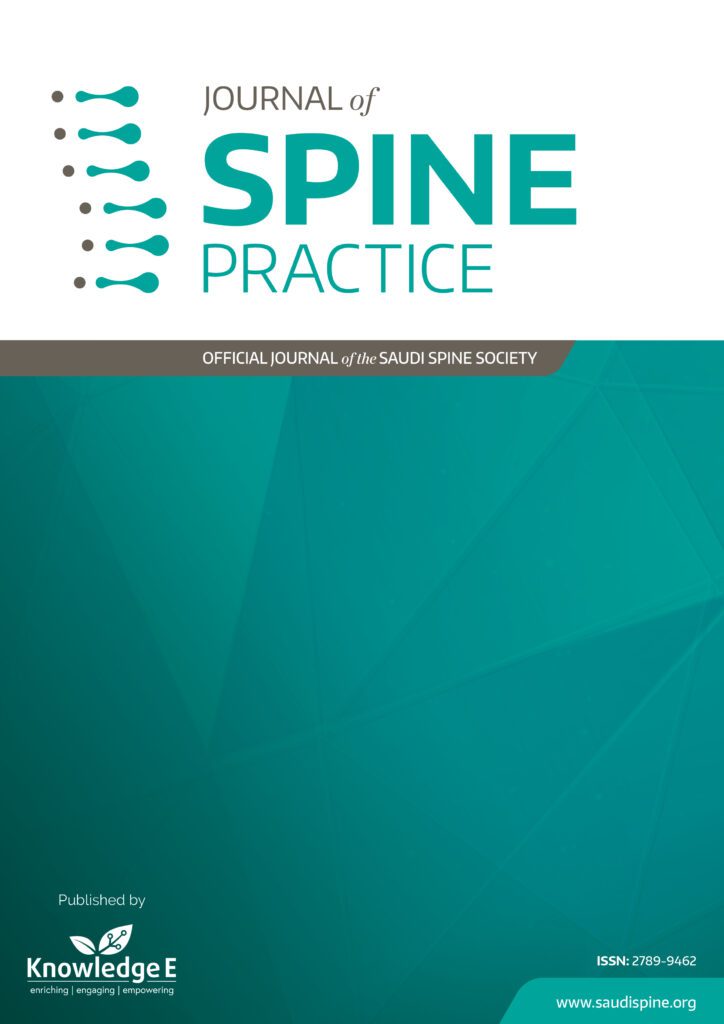
Journal of Spine Practice
ISSN: 2789-9462
Leading research in all spine subspecialties focusing on orthopaedic spine, neurosurgery, radiology, and pain management.
Are Healthcare Providers Providing Appropriate Educational Material for People with Low Back Pain?
Published date: Nov 07 2021
Journal Title: Journal of Spine Practice
Issue title: Journal of Spine Practice (JSP): Volume 1, Issue 1
Pages: 21
Authors:
Abstract:
Introduction: One of the contributing factors to the burden of low back pain (LBP) is the failure to provide patients with appropriate education and advice about diagnosis and management. To date, no information exists about whether the content of patients’ information and educational material provided in physiotherapy clinics in Saudi Arabia is in line with the Clinical Practice Guidelines and contemporary practice. Therefore, the aim of this study was to investigate the content of educational material provided by physiotherapy clinics, hospitals, or distributed by healthcare associations to people with LBP in Saudi Arabia, to determine whether this information is adequate to reassure patients and inform self-management. This study also seeks to explore whether these materials are consistent with CPGs for people with LBP.
Methodology: A sample of educational items (English or Arabic) in Saudi Arabia was collected. Content analysis was conducted to analyze data based on manifest content.
Result: Seventeen educational materials were included, originating from diverse sources; the Ministry of Health hospitals (n = 10), military hospitals (n = 4), private hospitals (n = 2), and multidisciplinary healthcare association (n = 1). Six main sub-themes were identified: epidemiological/anatomical data about LBP (n = 6); causes/risk factors (n = 10); exercise (n = 14) and physical activity-related recommendations (n = 3); treatment-related recommendations (n = 2); general health and lifestyle-related recommendations (n = 8); and postural and ergonomics-related recommendations (n = 13). Ultimately, one theme was formulated, namely, the content of educational materials was hindering reassurance and self-management for people with LBP. The items reviewed were heavily influenced by the biomedical model of pain.
Conclusion: The educational materials reviewed failed to properly report information about LBP from a biopsychosocial perspective and were inadequate to assure patients or inform self-management.
References: